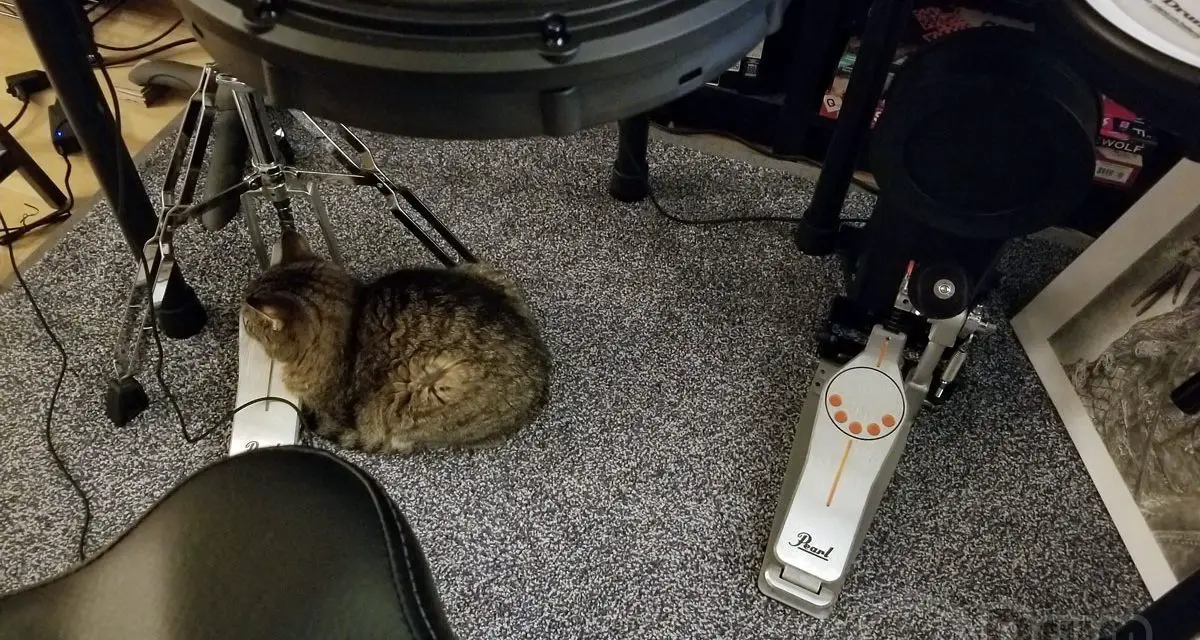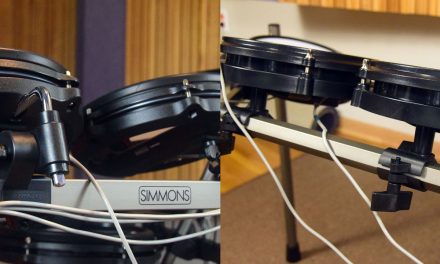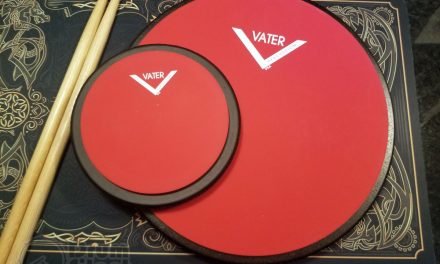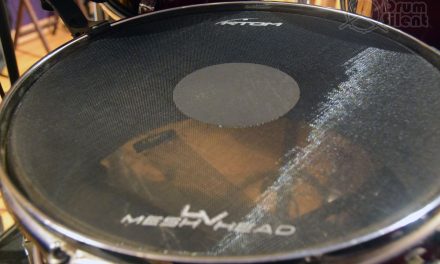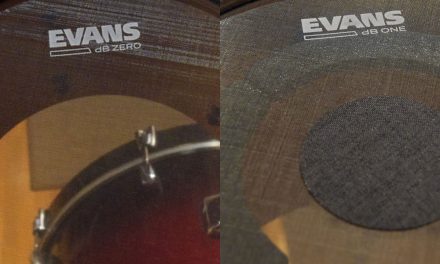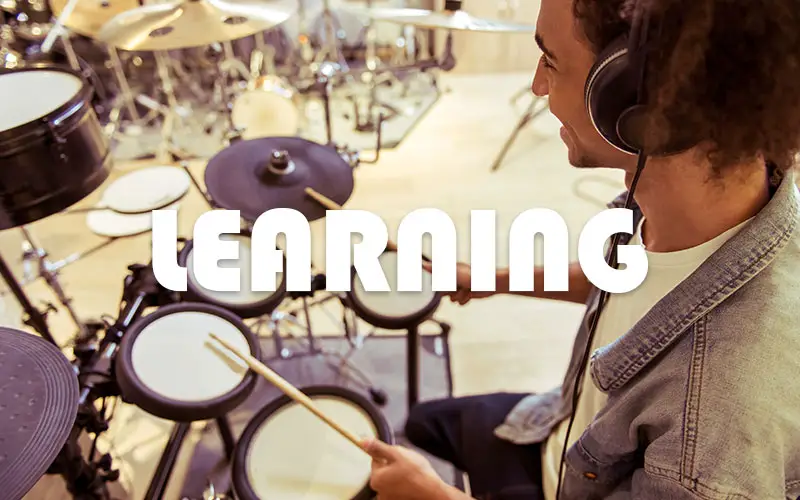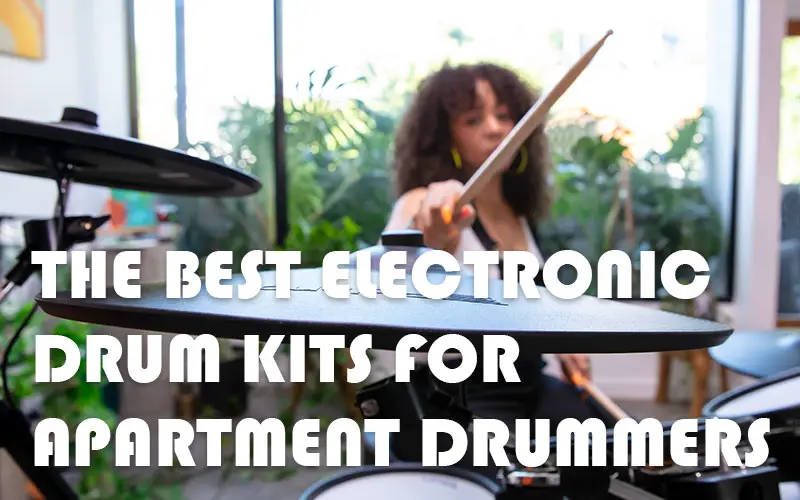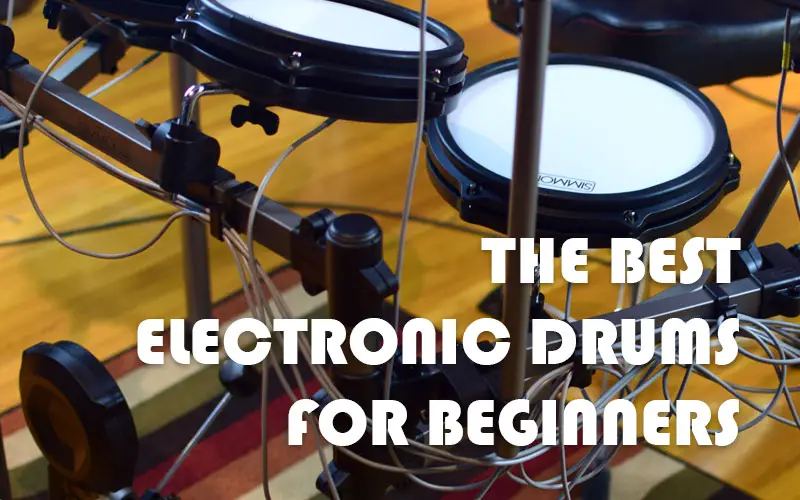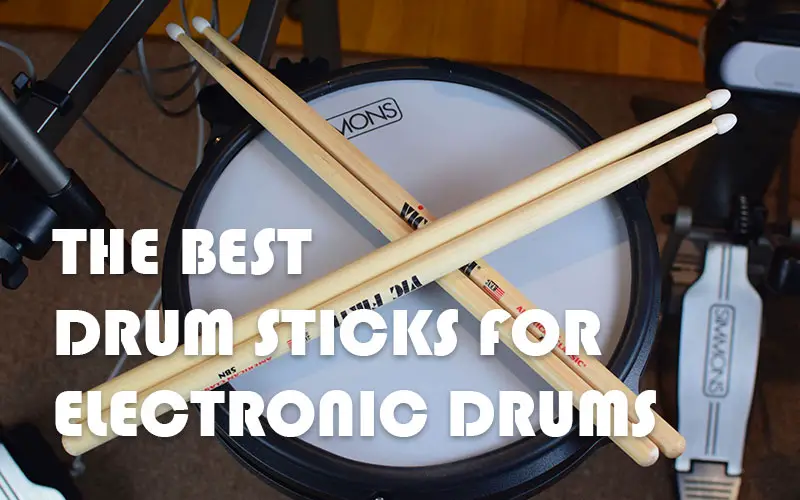Both vibrations and noise from your electronic drum kit can pose different problems that need to be addressed separately, and it’s good to identify which is which if you’re having problems with either in your apartment.
How Noise and Vibration Are Different Problems
When playing your electronic drum kit, you are going to be generating some noise from hitting the pads. The noise is basically just what you can hear with your ears. In addition to the noise, the vibrations from hitting the pads can be transferred through the drum rack and into the floor. The vibrations can also be a problem with your kick drum and hi-hats since you’re basically stomping on pedals or controllers to operate those two.
If you have thin walls or floors, the noise could certainly be a problem for your neighbors. They might be able to hear the actual sounds of the sticks or beaters hitting the pads.
The vibration problem is more of an issue with the floor alone. Vibrations going into the floor from your drum rack or pedals can shake the ceiling in the apartment below you, which can rattle things or create noise on the ceiling below you.
Each of those problems can be bad enough on it’s own. But if you have an issue with both noise and vibration isolation in your apartment, the problem will be compounded and it will be much more likely that you are bothering at least your downstairs neighbors in some form.
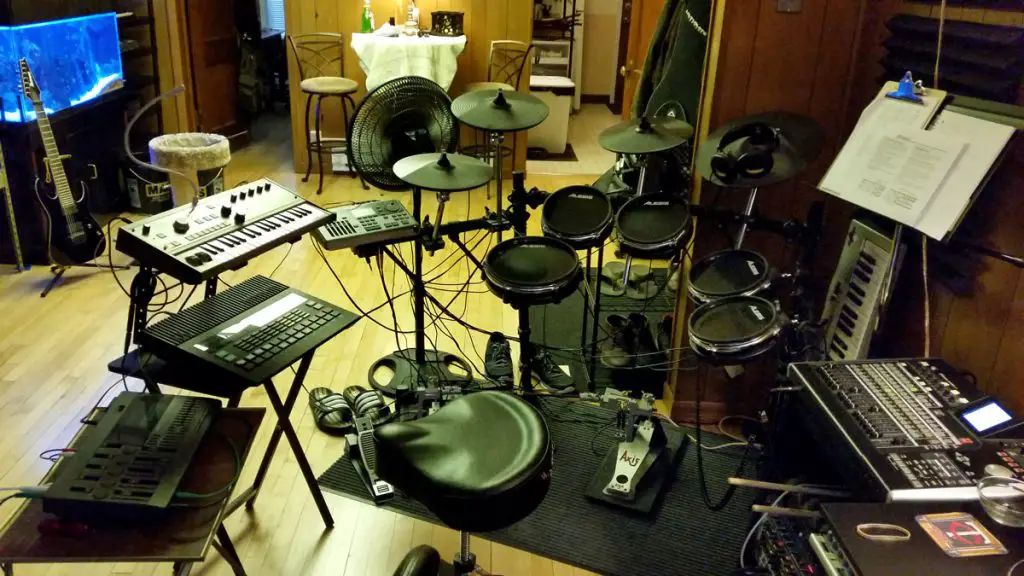
This apartment building had thin hardwood floors, it turned out to not be very ideal for playing drums
Dealing With Vibration Issues
To keep vibrations from going into the floor below you, it’s best to look into getting some sort of anti-vibration platform or padding that you can place under any point of your electronic drum kit that touches the floor. In most cases that means the footings of the drum rack, the bass drum pedal and pad and the hi-hat stand or controller. There’s many things that can work well to address the vibration, such as:
- The classic, homemade tennis ball riser
- A platform isolated with Sylomar
- Anti-vibration pads for appliances
- Anti-vibration mats for gyms and appliances
- Anti-vibration mats made for drums and studios
- Roland NE-10 or Roland NE-1 isolation pads
- … or any combination of these types of materials and products, even if you have to do multiple layers
The amount of work you will need to put in to combat vibrations will entirely depend on the quality of the floors in your apartment building. If you have thin floors or hardwood, or if it’s an old building with creaky floors it can be a struggle. Some buildings have carpeting or thicker floors and they might even have noise and vibration reduction reduction materials built into the floor. In that case it’ll be easier to tackle any vibration issues.
The Water Glass Test
A quick and easy vibration test can be done using a glass of water. Kind of like the water glass and the T-rex in Jurassic Park.
Just place a glass of water on the floor right next to different places where your kit makes contact with the floor. This works a little better if you have a clear glass and you have some light reflecting on the top of the water so you can see even smaller ripples.
Place the glass next to the legs of the drum rack and play a bit, see if there are any ripples in the water. Place it next to the kick drum pedal and see how much the water ripples. Place it next to the hi-hat pedal and see what happens there.
You can get a quick idea of what parts of your kit are causing vibration problems this way. In my case I also have to lock my cat in another room, otherwise she’ll just want to try to drink from the glass of water the whole time.
If you want to go more hi-tech you can find vibration sensing apps for iOS or Android and try to use your phone, but I find the water test to be easy enough.
Dealing With Noise Issues
Actual noise issues will be harder to combat in an apartment setting. It’s just not very practical or in many cases not even possible to soundproof a room in an apartment building.
You can do things to cut down on acoustic reflections, which can help a little, but it’s not a total solution. Hanging rugs on the walls, hanging noise absorbing panels, putting up bookshelves full of books – those can work sometimes but they aren’t going to make a huge dent in bad noise issues.
You can also tackle noise issues directly on the kit itself. Using mesh drum pads, quite hi-hat controller pedals and silent kick drum beaters can help cut down on noise at the kit level.
If you really want to play electronic drums in an apartment, it’s best to plan ahead and make sure you investigate the noise properties of any building you plan on moving into. It can be hard to test floors and walls for noise unless you can convince whoever is showing you the apartment to go into neighboring units and make some noise. You might be able to get an idea if you take some time to listen to environmental noise during an apartment showing. See if you can hear people walking around above you, stuff like that. If you run into any other residents in the hallway during a showing, stop them and ask them what the noise situation is like.
If possible, find an apartment that has a centrally located room like a bedroom or something that doesn’t share walls with any neighboring units. And even better yet, get a ground floor unit so there’s nobody below you either. Or if neither of those are possible, at least try to place your electronic drum kit as far away as possible from any shared walls.

